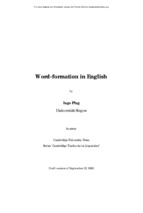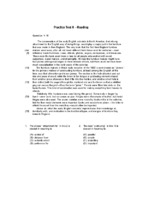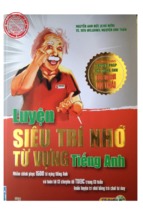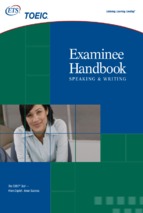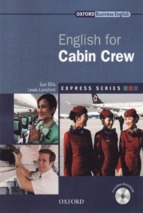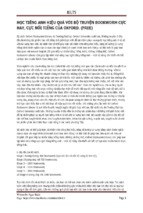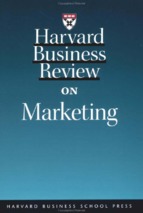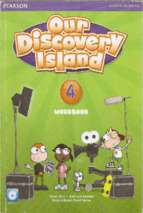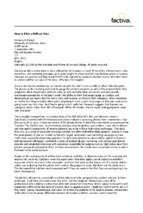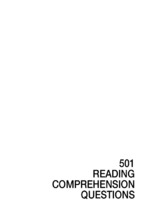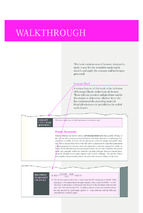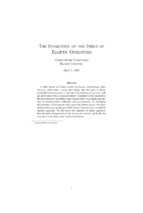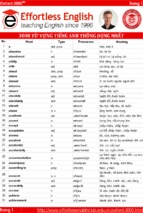GLOBAL
BUSINESS
Third Edition
Mike W. Peng, Ph.D.
Jindal Chair of Global Business Strategy
Executive Director, Center for Global Business
Jindal School of Management
University of Texas at Dallas
Fellow, Academy of International Business
Australia Brazil Japan Korea Mexico Singapore Spain United Kingdom United States
Copyright 2012 Cengage Learning. All Rights Reserved. May not be copied, scanned, or duplicated, in whole or in part. Due to electronic rights, some third party content may be suppressed from the eBook and/or eChapter(s). Editorial review has
deemed that any suppressed content does not materially affect the overall learning experience. Cengage Learning reserves the right to remove additional content at any time if subsequent rights restrictions require it.
This is an electronic version of the print textbook. Due to electronic rights restrictions, some third party content may be suppressed. Editorial
review has deemed that any suppressed content does not materially affect the overall learning experience. The publisher reserves the right to
remove content from this title at any time if subsequent rights restrictions require it. For valuable information on pricing, previous
editions, changes to current editions, and alternate formats, please visit www.cengage.com/highered to search by
ISBN#, author, title, or keyword for materials in your areas of interest.
Copyright 2012 Cengage Learning. All Rights Reserved. May not be copied, scanned, or duplicated, in whole or in part. Due to electronic rights, some third party content may be suppressed from the eBook and/or eChapter(s). Editorial review has
deemed that any suppressed content does not materially affect the overall learning experience. Cengage Learning reserves the right to remove additional content at any time if subsequent rights restrictions require it.
Global Business, Third Edition
Mike W. Peng
Senior Vice President, LRS/Acquisitions &
Solutions Planning: Jack W. Calhoun
Editorial Director, Business & Economics:
Erin Joyner
Senior Acquisitions Editor: Michele Rhoades
© 2014, 2011 South-Western, Cengage Learning
ALL RIGHTS RESERVED. No part of this work covered by the copyright herein
may be reproduced, transmitted, stored, or used in any form or by any means
graphic, electronic, or mechanical, including but not limited to photocopying,
recording, scanning, digitizing, taping, web distribution, information networks,
or information storage and retrieval systems, except as permitted under
Section 107 or 108 of the 1976 United States Copyright Act, without the prior
written permission of the publisher.
Developmental Editor: Jennifer King
Editorial Assistant: Tamara Grega
Senior Content Project Managers:
Emily Nesheim and Tamborah Moore
Media Editor: Rob Ellington
Manufacturing Planner: Ron Montgomery
For product information and technology assistance, contact us at
Cengage Learning Customer & Sales Support, 1-800-354-9706
For permission to use material from this text or product,
submit all requests online at www.cengage.com/permissions
Further permissions questions can be emailed to
[email protected]
Rights Acquisitions Specialist: Amber Hosea
Production Service: MPS Limited
Sr. Art Director: Stacy Jenkins Shirley
Cover and Internal Designer: Itzhack Shelomi
Cover Images: © Jack Hollingsworth/
Getty Images, © BlueLine Pictures/Getty
Images, © Ko Chi Keung Alfred/RedLink/Corbis
Cengage Learning WebTutor™ is a trademark of Cengage Learning.
Library of Congress Control Number: 2012949032
ISBN-13: 978-1-133-48593-3
ISBN-10: 1-133-48593-6
South-Western
5191 Natorp Boulevard
Mason, OH 45040
USA
Cengage Learning products are represented in Canada by Nelson Education, Ltd.
For your course and learning solutions, visit www.cengage.com
Purchase any of our products at your local college store or at our preferred
online store www.cengagebrain.com
Printed in the United States of America
1 2 3 4 5 6 7 16 15 14 13 12
Copyright 2012 Cengage Learning. All Rights Reserved. May not be copied, scanned, or duplicated, in whole or in part. Due to electronic rights, some third party content may be suppressed from the eBook and/or eChapter(s). Editorial review has
deemed that any suppressed content does not materially affect the overall learning experience. Cengage Learning reserves the right to remove additional content at any time if subsequent rights restrictions require it.
To Agnes, Grace, and James
Copyright 2012 Cengage Learning. All Rights Reserved. May not be copied, scanned, or duplicated, in whole or in part. Due to electronic rights, some third party content may be suppressed from the eBook and/or eChapter(s). Editorial review has
deemed that any suppressed content does not materially affect the overall learning experience. Cengage Learning reserves the right to remove additional content at any time if subsequent rights restrictions require it.
Brief Contents
Preface ix
About the Author
xix
Part 1 Laying Foundations
1
Chapter 1: Globalizing Business
2
Chapter 2: Understanding Formal Institutions: Politics, Laws,
and Economics
32
Chapter 3: Emphasizing Informal Institutions: Cultures, Ethics,
and Norms
62
Chapter 4: Leveraging Resources and Capabilities
92
PengAtlas 1
118
Integrative Cases
124
Part 2 Acquiring Tools
139
Chapter 5: Trading Internationally
140
Chapter 6: Investing Abroad Directly
174
Chapter 7: Dealing With Foreign Exchange
204
Chapter 8: Capitalizing on Global and Regional Integration
232
PengAtlas 2
264
Integrative Cases
270
Part 3 Strategizing around the Globe
285
Chapter 9: Growing and Internationalizing the Entrepreneurial Firm
286
Chapter 10: Entering Foreign Markets
310
Chapter 11: Managing Global Competitive Dynamics
336
Chapter 12: Making Alliances and Acquisitions Work
364
Chapter 13: Strategizing, Structuring, and Learning around the World
394
PengAtlas 3
424
Integrative Cases
428
Part 4 Building Functional Excellence
465
Chapter 14: Competing on Marketing and Supply Chain Management
466
Chapter 15: Managing Human Resources Globally
492
iv
Copyright 2012 Cengage Learning. All Rights Reserved. May not be copied, scanned, or duplicated, in whole or in part. Due to electronic rights, some third party content may be suppressed from the eBook and/or eChapter(s). Editorial review has
deemed that any suppressed content does not materially affect the overall learning experience. Cengage Learning reserves the right to remove additional content at any time if subsequent rights restrictions require it.
v
Brief Contents
Chapter 16: Financing and Governing the Corporation Globally
522
Chapter 17: Managing Corporate Social Responsibility Globally
552
PengAtlas 4
578
Integrative Cases
582
Glossary 598
Name Index
607
Organization Index
617
Subject Index
621
Copyright 2012 Cengage Learning. All Rights Reserved. May not be copied, scanned, or duplicated, in whole or in part. Due to electronic rights, some third party content may be suppressed from the eBook and/or eChapter(s). Editorial review has
deemed that any suppressed content does not materially affect the overall learning experience. Cengage Learning reserves the right to remove additional content at any time if subsequent rights restrictions require it.
Table of Contents
Preface ix
From SWOT to VRIO
100
About the Author
Debates and Extensions
104
Management Savvy
109
Part 1 Integrative Cases
124
1.1 Coca-Cola in Africa
124
xix
Part 1 Laying Foundations
1
Chapter 1: Globalizing Business
2
What Is Global Business?
4
Why Study Global Business?
10
1.2 Whose Law Is Bigger: Arbitrating
Government-Firm Disputes in the EU
126
A Unified Framework
14
1.3 Fighting Counterfeit Motion Pictures
128
What Is Globalization?
18
Global Business and Globalization
at a Crossroads
1.4 Brazil’s Embraer: From State-Owned
Enterprise to Global Leader
131
21
1.5 Microsoft in China
136
Organization of the Book
25
Chapter 2: Understanding Formal
Institutions: Politics, Laws, and Economics
32
Chapter 5: Trading Internationally
140
Understanding Institutions
35
Why Do Nations Trade?
143
What Do Institutions Do?
36
Theories of International Trade
145
An Institution-Based View of Global Business
38
Realities of International Trade
158
Political Systems
40
Debates and Extensions
163
Legal Systems
43
Management Savvy
166
Economic Systems
47
Chapter 6: Investing Abroad Directly
174
Debates and Extensions
48
Understanding the FDI Vocabulary
176
Management Savvy
54
Chapter 3: Emphasizing Informal Institutions:
Cultures, Ethics, and Norms
Why Do Firms Become MNEs
by Engaging in FDI?
180
62
Realities of FDI
186
Where Do Informal Institutions Come From?
64
How MNEs and Host Governments Bargain
190
Culture 65
Debates and Extensions
192
Cultural Differences
Management Savvy
195
Chapter 7: Dealing with Foreign Exchange
204
What Determines Foreign Exchange Rates?
206
70
Ethics 78
Norms and Ethical Challenges
80
Debates and Extensions
81
Management Savvy
84
Part 2 Acquiring Tools
139
Evolution of the International Monetary
System 214
Chapter 4: Leveraging Resources and
Capabilities 92
Strategic Responses to
Foreign Exchange Movements
218
Understanding Resources and Capabilities
94
Debates and Extensions
221
Resources, Capabilities, and the Value Chain
96
Management Savvy
225
vi
Copyright 2012 Cengage Learning. All Rights Reserved. May not be copied, scanned, or duplicated, in whole or in part. Due to electronic rights, some third party content may be suppressed from the eBook and/or eChapter(s). Editorial review has
deemed that any suppressed content does not materially affect the overall learning experience. Cengage Learning reserves the right to remove additional content at any time if subsequent rights restrictions require it.
vii
Contents
Chapter 8: Capitalizing on Global and
Regional Integration
232
Chapter 11: Managing Global Competitive
Dynamics 336
Global Economic Integration
234
Competition, Cooperation, and Collusion
339
Organizing World Trade
237
Regional Economic Integration
240
Institutions Governing Domestic and
International Competition
343
Regional Economic Integration in Europe
242
Resources Influencing Competitive Dynamics 346
Regional Economic Integration in the
Americas 248
Attacks, Counterattacks, and Signaling
350
Local Firms versus Multinational Enterprises
351
Regional Economic Integration in the
Asia Pacific
Debates and Extensions
352
250
Management Savvy
356
Regional Economic Integration in Africa
252
Debates and Extensions
253
Management Savvy
256
Chapter 12: Making Alliances and
Acquisitions Work
364
Defining Alliances and Acquisitions
367
Part 2 Integrative Cases
270
2.1 Canada and the United States Fight
Over Pigs
Institutions, Resources, Alliances, and
Acquisitions 368
270
Formation of Alliances
374
2.2 Foreign Direct Investment in the Indian
Retail Industry
Evolution and Dissolution of Alliances
376
272
Performance of Alliances
378
2.3 The Fate of Opel
274
Motives for Acquisitions
379
Performance of Acquisitions
383
Debates and Extensions
384
Management Savvy
386
Chapter 13: Strategizing, Structuring, and
Learning around the World
394
Multinational Strategies and Structures
396
2.4 Jobek do Brasil’s Foreign Exchange
Challenges 276
2.5 The EU–Korea Free Trade Agreement
279
Part 3 Strategizing around the
Globe 285
Chapter 9: Growing and Internationalizing
the Entrepreneurial Firm
286
Entrepreneurship and Entrepreneurial
Firms 289
How Institutions and Resources Affect
Multinational Strategies, Structures, and
Learning 404
Institutions, Resources, and
Entrepreneurship 289
Worldwide Learning, Innovation,
and Knowledge Management
408
Growing the Entrepreneurial Firm
293
Debates and Extensions
412
Internationalizing the Entrepreneurial Firm
298
Management Savvy
415
Debates and Extensions
301
Management Savvy
303
Part 3 Integrative Cases
428
Chapter 10: Entering Foreign Markets
310
3.1 Wikimart: Building a Russian Version of
Amazon 428
Overcoming the Liability of Foreignness
312
3.2 Private Military Companies
431
Where to Enter?
315
When to Enter?
318
3.3 Amazon, Bookoff, and the Japanese
Bookselling Industry
435
How to Enter?
320
3.4 Huawei’s Intellectual Property War
438
Debates and Extensions
326
3.5 Is A Diamond (Cartel) Forever?
446
Management Savvy
329
3.6 The TNK-BP Joint Venture
452
Copyright 2012 Cengage Learning. All Rights Reserved. May not be copied, scanned, or duplicated, in whole or in part. Due to electronic rights, some third party content may be suppressed from the eBook and/or eChapter(s). Editorial review has
deemed that any suppressed content does not materially affect the overall learning experience. Cengage Learning reserves the right to remove additional content at any time if subsequent rights restrictions require it.
viii Contents
3.7 Geely’s Acquisition of Volvo
455
3.8 Hilton Welcomes Chinese Travelers
at Home and Abroad
459
Part 4 Building Functional
Excellence 465
Chapter 14: Competing on Marketing and
Supply Chain Management
466
Three of the Four Ps in Marketing
468
From Distribution Channel to
Supply Chain Management
474
The Triple As in Supply Chain Management
475
How Institutions and Resources Affect
Marketing and Supply Chain Management 478
Debates and Extensions
481
Management Savvy
483
Chapter 15: Managing Human Resources
Globally 492
Staffing 495
Managers 528
Board of Directors
532
Governance Mechanisms as a Package
534
A Global Perspective
536
Institutions, Resources, and Corporate
Finance and Governance
538
Debates and Extensions
543
Management Savvy
544
Chapter 17: Managing Corporate Social
Responsibility Globally
552
A Stakeholder View of the Firm
555
Institutions, Resources, and
Corporate Social Responsibility
561
Debates and Extensions
568
Management Savvy
569
Part 4 Integrative Cases
582
4.1 ESET: From a “Living-Room” Firm
to a Global Player in the Antivirus
Software Industry
582
4.2 Dallas Versus Delhi
586
Training and Development
500
Compensation and Performance Appraisal
502
Labor Relations
505
Institutions, Resources, and
Human Resource Management
4.3 Microfinance: Macro Success or
Global Mess?
587
506
Debates and Extensions
511
4.4 Sino Iron: Engaging Stakeholders
in Australia
589
Management Savvy
513
4.5 Foxconn
595
Chapter 16: Financing and Governing the
Corporation Globally
522
Financing Decisions
525
Owners 526
Glossary 598
Name Index
607
Organization Index
617
Subject Index
621
Copyright 2012 Cengage Learning. All Rights Reserved. May not be copied, scanned, or duplicated, in whole or in part. Due to electronic rights, some third party content may be suppressed from the eBook and/or eChapter(s). Editorial review has
deemed that any suppressed content does not materially affect the overall learning experience. Cengage Learning reserves the right to remove additional content at any time if subsequent rights restrictions require it.
Preface
The first two editions of Global Business aspired to set a new standard for international business (IB) textbooks. Based on the enthusiastic support from students
and instructors in Australia, Brazil, Britain, Canada, China, Egypt, France, Hong
Kong, India, Indonesia, Ireland, Israel, Lithuania, Malaysia, Puerto Rico, Russia,
Slovenia, South Africa, South Korea, Taiwan, Thailand, and the United States, the
first two editions achieved unprecedented success. A Chinese translation is now
available and a European adaptation (coauthored with Klaus Meyer) has been successfully launched. In short, Global Business is global.
The third edition aspires to do even better. It continues the market-winning
framework centered on one big question and two core perspectives pioneered in
the first edition, and has been thoroughly updated to capture the rapidly moving
research and events of the past few years. Written for undergraduate and MBA
students around the world, the third edition will continue to make IB teaching and
learning more (1) engaging, (2) comprehensive, (3) fun, and (4) relevant.
More Engaging
As an innovation in IB textbooks, a unified framework integrates all chapters.
Given the wide range of topics in IB, most textbooks present the discipline in a
fashion that “Today is Tuesday, it must be Luxembourg.” Very rarely do authors
address: “Why Luxembourg today?” More important, why IB? What is the big question in IB? Our unified framework suggests that the discipline can be united
by one big question and two core perspectives. The big question is: What determines the success and failure of firms around the globe? To address this question,
Global Business introduces two core perspectives, (1) the institution-based view
and (2) the resource-based view, in all chapters. It is this relentless focus on our
big question and core perspectives that enables this book to engage a variety of
IB topics in an integrated fashion. This provides unparalleled continuity in the
learning process.
Global Business further engages readers through an evidence-based approach. I
have endeavored to draw on the latest research rather than the latest fads. As an
active researcher myself, I have developed the unified framework not because it
just popped up in my head when I wrote the book. Rather, this is an extension of
my own research that consistently takes on the big question and leverages the two
core perspectives.1
For the big question, see M. W. Peng, 2004, Identifying the big question in international business research, Journal of
International Business Studies, 35: 99–108. For the institution-based view, see M. W. Peng, S. L. Sun, B. Pinkham, &
H. Chen, 2009, The institution-based view as a third leg for a strategy tripod, Academy of Management Perspectives,
23(3): 63–81; M. W. Peng, D. Wang, & Y. Jiang, 2008, An institution-based view of international business strategy: A focus
on emerging economies, Journal of International Business Studies, 39: 920–936. For the resource-based view, see
M. W. Peng, 2001, The resource-based view and international business, Journal of Management, 27: 803–829.
1
ix
Copyright 2012 Cengage Learning. All Rights Reserved. May not be copied, scanned, or duplicated, in whole or in part. Due to electronic rights, some third party content may be suppressed from the eBook and/or eChapter(s). Editorial review has
deemed that any suppressed content does not materially affect the overall learning experience. Cengage Learning reserves the right to remove additional content at any time if subsequent rights restrictions require it.
x Preface
Another vehicle to engage students is debates. Most textbooks present knowledge
“as is” and ignore debates. But obviously our field has no shortage of debates. It is
the responsibility of textbook authors to engage students by introducing cuttingedge debates. Thus, I have written a beefy “Debates and Extensions” section for
every chapter.
Finally, this book engages students by packing rigor with accessibility. There
is no “dumbing down.” No other competing IB textbook exposes students to an
article on how to save Europe by the Managing Director of the International
Monetary Fund (In Focus 8.1), a commentary on China’s ten years in the World
Trade Organization by the US Ambassador to China (Emerging Markets 8.1), and
a Harvard Business Review article on China’s outward foreign direct investment
(authored by me—Emerging Markets 6.1). These are not excerpts but full-blown,
original articles—the first in an IB (and, in fact, in any management) textbook.
These highly readable short pieces directly give students a flavor of the original
insights.
More Comprehensive
Global Business offers the most comprehensive and innovative coverage of IB topics
available on the market. Unique chapters not found in other IB textbooks are:
Chapter 9 on entrepreneurship and small firms’ internationalization.
Chapter 11 on global competitive dynamics.
Chapter 16 on corporate finance and governance.
Chapter 17 on corporate social responsibility (in addition to one full-blown
chapter on ethics, cultures, and norms, Chapter 3).
Half of Chapter 12 (alliances and acquisitions) deals with the inadequately
covered topic of acquisitions. Approximately 70% of market entries based
on foreign direct investment (FDI) around the world use acquisitions. Yet,
none of the other IB textbooks has a chapter on acquisitions—clearly, a
missing gap.
The most comprehensive topical coverage is made possible by drawing on the
latest and most comprehensive range of the research literature. Specifically, I have
accelerated my own research, publishing a total of 30 articles since 2010 after I
finished the second edition.2 I have drawn on such latest research to inject cuttingedge thinking into the third edition.
In addition, I have also endeavored to consult numerous specialty journals. For
example, the trade and finance chapters (Chapters 5–7) draw on the American Economic Review, Journal of Economic Literature, and Quarterly Journal of Economics. The
entrepreneurship chapter (Chapter 9) consults with the Journal of Business Venturing
and Entrepreneurship Theory and Practice. The marketing and supply chain chapter
(Chapter 14) draws heavily from the Journal of Marketing, Journal of International Marketing, and Journal of Operations Management. The corporate finance and governance
chapter (Chapter 16) is visibly guided by research published in the Journal of Finance
and Journal of Financial Economics.
The end result is the unparalleled, most comprehensive set of evidence-based
insights on the IB market. While citing every article is not possible, I am confident
2
All my articles are listed at www.mikepeng.com and www.utdallas.edu/~mikepeng. Go to “Journal Articles.”
Copyright 2012 Cengage Learning. All Rights Reserved. May not be copied, scanned, or duplicated, in whole or in part. Due to electronic rights, some third party content may be suppressed from the eBook and/or eChapter(s). Editorial review has
deemed that any suppressed content does not materially affect the overall learning experience. Cengage Learning reserves the right to remove additional content at any time if subsequent rights restrictions require it.
Preface
that I have left no major streams of research untouched. Feel free to check the
Name Index to verify this claim.
Finally, the third edition of Global Business continues to have a global set of
cases contributed by scholars around the world—an innovation on the IB market.
Virtually all other IB textbooks have cases written by book authors. In comparison,
this book has been blessed by a global community of case contributors who are
based in Austria, Brazil, China, France, Germany, Hong Kong, India, and the United
States. Many are experts who are located in, or are from, the countries in which the
cases take place. For example, we now have a Brazil case penned by a Brazil-based
author (see the Integrative Case on Jobek do Brasil), and two China cases written by
China-based authors (see the Integrative Cases on Geely’s acquisition of Volvo and
Sino Iron in Australia). This edition also features a Russia case contributed by the
world’s top two leading experts on Russian management (see the Integrative Case
on Wikimart). The end result is an unparalleled, diverse collection of case materials
that will significantly enhance IB teaching and learning around the world.
More Fun
If you fear that this book must be very boring because it draws so heavily on current research, you are wrong. I have used a clear, engaging, conversational style to
tell the “story.” Relative to rival books, my chapters are generally more lively and
shorter. Some reviewers have commented that reading Global Business is like reading a “good magazine.” A large number of interesting anecdotes have been woven
into the text. In addition to examples from the business world, non-traditional
(“outside-the-box”) examples range from ancient Chinese military writings to mutually assured destruction (MAD) strategy during the Cold War, from Shakespeare’s
The Merchant of Venice to Tolstoy’s Anna Karenina. Popular movies such as A Few Good
Men, Devil’s Advocate, and Legally Blonde are also featured. In addition, numerous
Opening Cases, Closing Cases, and In Focus boxes spice up the book. Check out
the following fun-filled features:
Partying in Saudi Arabia (Chapter 3 Opening Case)
Adding value to the dirtiest job online (In Focus 4.2)
Why are US exports so competitive? (Chapter 5 Opening Case)
A sticky business in Singapore (In Focus 5.1)
Cry for me, Argentina (Chapter 6 Closing Case)
The Greek tragedy (Chapter 8 Closing Case)
The world’s best place to make Viagra (In Focus 10.1)
A fox in the hen house (In Focus 11.2)
Brazil’s Whopper deal (Emerging Markets 12.2)
Mickey goes to Shanghai (Chapter 13 Opening Case)
Wolf wars (Chapter 17 Closing Case)
Milton Friedman goes global (Emerging Markets 17.1)
There is one Video Case from BBC News to support every chapter. While virtually all competing books have some videos, none has a video package that is so
integrated with the learning objectives of every chapter.
Finally, as a new feature introduced since the second edition, PengAtlas allows
you to conduct IB research using informative maps and other geographic and
cultural literacy tools to enhance your learning.
Copyright 2012 Cengage Learning. All Rights Reserved. May not be copied, scanned, or duplicated, in whole or in part. Due to electronic rights, some third party content may be suppressed from the eBook and/or eChapter(s). Editorial review has
deemed that any suppressed content does not materially affect the overall learning experience. Cengage Learning reserves the right to remove additional content at any time if subsequent rights restrictions require it.
xi
xii Preface
More Relevant
So what? Chapters in most textbooks leave students to figure out the crucial “So
what?” question for themselves. In contrast, I conclude every chapter with an
action-packed section titled “Management Savvy.” Each section has at least one
table (or one teachable slide) that clearly summarizes the key learning points from
a practical standpoint. No other competing IB book is so savvy and so relevant.
Further, ethics is a theme that cuts through the book, with at least one “Ethical
Dilemma” feature and a series of Critical Discussion Questions on ethics in each
chapter. Finally, many chapters offer career advice for students. For example:
Chapter 1 In Focus 1.3 directly addresses a question many students would ask:
What language and what fields should I study?
Chapter 4 develops a resource-based view of the individual—that is, about
you, the student. The upshot? You want to make yourself into an “untouchable” who adds valuable, rare, and hard-to-imitate capabilities indispensable
to an organization. In other words, you want to make sure your job cannot be
outsourced.
Chapter 15 offers tips on how to strategically and proactively invest in your
career now—as a student—for future international career opportunities.
What’s New in the Third Edition?
Most importantly, the third edition has (1) highlighted the executive voice by drawing more heavily from CEOs and other business leaders, (2) dedicated more space
to emerging economies, and (3) enhanced the quantity and variety of cases.
First, since Global Business aims to train a new generation of global business leaders, the third edition has featured more extensive quotes and perspectives from
global business leaders. These are longer and more visibly prominent break-out
quotes—not merely single quotes typically embedded (or “buried”) in paragraphs.
In Chapter 1 alone, you will enjoy such insightful quotes from (1) GE’s current
chairman and CEO and (2) GE’s former chairman and CEO. In later chapters, the
following global business leaders will share their thoughts with you:
Applied Materials’ human resource executive
Argentina’s president
Bayer North America’s CEO
Dow Chemical’s CEO
IBM’s CEO
IBM’s chief procurement officer
IMF’s managing director—a full article
TNK-BP’s chairman and CEO and Alfa Group’s founder
US Ambassador to China—a full article
US Secretary of Justice (representing the Department of Justice’s challenge of
AT&T’s proposed merger with T- Mobile)
US Secretary of Treasury (on the US-China Strategic and Economic Dialogue)
Whole Foods’ co-founder and CEO
WTO’s director-general
Second, this edition builds on Global Business’s previous strengths by more prominently highlighting global business challenges in and out of emerging economies.
This is both a reflection of the global realities in which emerging economies have
Copyright 2012 Cengage Learning. All Rights Reserved. May not be copied, scanned, or duplicated, in whole or in part. Due to electronic rights, some third party content may be suppressed from the eBook and/or eChapter(s). Editorial review has
deemed that any suppressed content does not materially affect the overall learning experience. Cengage Learning reserves the right to remove additional content at any time if subsequent rights restrictions require it.
Preface
played a more prominent role and a reflection of my own strong research interest in
emerging economies. Specifically, in the third edition, (1) a new Emerging Markets inchapter feature is launched in every chapter, and (2) 18 out of 23 (78%) of the longer
Integrative Cases deal with emerging economies (including one case on Central and
Eastern Europe, two cases each on Africa, Brazil, Russia, and India, and six on China).
Third, in response to students’ and professors’ enthusiasm about the wideranging and globally relevant cases in previous editions, the third edition has further enhanced the quantity and variety of cases. The number of Integrative Cases
has increased from 15 to 23—a 53% increase. The variety has also been enhanced
not only in terms of the geographic diversity noted above, but also in terms of the
mix of longer cases and shorter cases. In addition, I have pushed myself to participate more actively in case writing. Therefore, I am very proud to report that of the
23 Integrative Cases in the third edition, I personally wrote 10 (43%). This compares very favorably to the one Integrative Case out of a total of 15 that I personally
authored in the second edition (representing a mere 7%).
Of course, in addition to these new features, every chapter has been thoroughly
updated. Of the 23 Integrative Cases, 19 (83%) are new to this edition. PengAtlas
maps have also been updated to capture the latest statistics.
The new BBC News Video Cases provide current, real-world examples of key
course topics. The set covers such diverse countries as Brazil, China, Cuba, Dubai,
India, Thailand, and Uruguay, and features a broad array of industries from hightech manufacturing to goat farming.
Support Materials
A full set of supplements is available for students and adopting instructors, all designed to facilitate ease of learning, teaching, and testing.
Global Business CourseMate. Cengage Learning’s Global Business CourseMate
brings course concepts to life with interactive learning, study, and exam preparation tools that support the printed textbook. Through this website, available for
an additional fee, students will have access to their own set of PowerPoint® slides,
flashcards, and games, as well as the Learning Objectives and Glossary for quick
reviews. A set of auto-gradable, interactive quizzes (prepared by Timothy R. Muth
of Florida Institute of Technology) will allow students to instantly gauge their
comprehension of the material. The quizzes are all tagged to the book’s Learning Objectives, Bloom’s taxonomy, and national standards. Finally, Global Business
CourseMate includes interactive maps that delve more deeply into key concepts
presented in the book.
Product Support Website. The flashcards, Learning Objectives, and Glossary
are available for quick reference on our complimentary student product support
website.
Webtutor on BlackBoard® and Webtutor on WebCT.™ Available on two different platforms, Global Business Webtutor enhances students’ understanding of the
material by featuring the Opening Cases and Video Cases, as well as the Glossary,
study flashcards, and interactive maps that delve more deeply into key concepts
presented in the book.
CengageNOW™ Course Management System. Designed by instructors
for instructors, CengageNOW™ mirrors the natural teaching workflow with an
Copyright 2012 Cengage Learning. All Rights Reserved. May not be copied, scanned, or duplicated, in whole or in part. Due to electronic rights, some third party content may be suppressed from the eBook and/or eChapter(s). Editorial review has
deemed that any suppressed content does not materially affect the overall learning experience. Cengage Learning reserves the right to remove additional content at any time if subsequent rights restrictions require it.
xiii
xiv Preface
easy-to-use online suite of services and resources, all in one program. With this
system, instructors can easily plan their courses, manage student assignments,
automatically grade, teach with dynamic technology, and assess student progress
with pre- and post-tests tagged to course outcomes and national standards. For
students, study tools include flashcards, PowerPoint® slides, media quizzes, guided
cases, and a set of quizzes based on interactive maps that enhance comprehension of the material and develop cultural and geographic literacy. Diagnostic tools
create a personalized study plan for each student that focuses their study efforts.
CengageNOW™ operates seamlessly with WebCT™, Blackboard®, and other
course management tools.
Global Economic Watch. Cengage Learning’s Global Economic Watch helps
instructors bring these pivotal current events into the classroom through a
powerful, continuously updated online suite of content, discussion forums, testing
tools, and more. The Watch, a first-of-its-kind resource, stimulates discussion and
understanding of the global downturn with easily integrated teaching solutions:
A thorough overview and timeline of events leading up to the global economic
crisis are included in the ebook module, Impact of the Global Economic Crisis on
Small Business
A content-rich blog of breaking news, expert analysis, and commentary—
updated multiple times daily—plus links to many other blogs
A powerful real-time database of hundreds of relevant and vetted journal,
newspaper, and periodical articles, videos, and podcasts—updated four times
every day
Discussion and testing content, PowerPoint® slides on key topics, sample
syllabi, and other teaching resources
History is happening now, so bring it into the classroom with The Watch at
www.cengage.com/thewatch.
Instructor’s Resource CD (IRCD). Instructors will find all of the teaching
resources they need to plan, teach, grade, and assess student understanding and
progress at their fingertips with this all-in-one resource for Global Business. The
IRCD contains:
Instructor’s Manual—This valuable, time-saving Instructor’s Manual includes comprehensive resources to streamline course preparation, including
teaching suggestions, lecture notes, answers to all chapter questions, and
Integrative Case discussion guides. Also included are discussion guidelines
and answers for the Video Cases, prepared by Carol Decker.
Test Bank—The Global Business Test Bank in ExamView ® software allows
instructors to create customized texts by choosing from 35 True/False,
35 Multiple Choice, and at least 8 short answer/essay questions for each of
the 17 chapters. Ranging in difficulty, all questions have been tagged to the
text’s Learning Objectives, Bloom’s taxonomy, and other national standards
to ensure that students are meeting the course criteria.
PowerPoint® Slides—This comprehensive set of more than 250 Powerpoint®
slides will assist instructors in the presentation of the chapter material, enabling students to synthesize key global concepts.
Global Business DVD. Perhaps one of the most exciting and compelling bonus
features of this program, these 17 short and powerful video clips, produced by BBC
Copyright 2012 Cengage Learning. All Rights Reserved. May not be copied, scanned, or duplicated, in whole or in part. Due to electronic rights, some third party content may be suppressed from the eBook and/or eChapter(s). Editorial review has
deemed that any suppressed content does not materially affect the overall learning experience. Cengage Learning reserves the right to remove additional content at any time if subsequent rights restrictions require it.
Preface
News, provide current and relevant real-world examples. The set covers such diverse countries as Brazil, China, Cuba, Dubai, India, Thailand, and Uruguay, and
features a broad array of industries from high-tech manufacturing to goat farming.
Instructor Product Support Website. For those instructors who prefer to access
supplements online, the Instructor’s Manual, PowerPoint® slides, and Test Bank are
also available through the instructor’s product support website.
Acknowledgments
As Global Business launches its third edition, I first want to thank all the customers—
professors, instructors, and students around the world who have made the book’s
success possible. A special thank-you goes to my friend and colleague, Klaus Meyer
(China Europe International Business School), who spearheaded the development of International Business, which was tailored for European (or, more broadly,
European, Middle Eastern, and African [EMEA]) students. Klaus has made Global
Business more global.
At UT Dallas, I thank my colleagues Dan Bochsler, Larry Chasteen, Tev Dalgic,
Van Dam, Greg Dess, Dave Ford, Richard Harrison, Maria Hasenhuttl, Charlie
Hazzard, Marilyn Kaplan, Seung-Hyun Lee, Elizabeth Lim, John Lin, Livia Markóczy,
Joe Picken, Roberto Ragozzino, Orlando Richard, Jane Salk, Mary Vice, Eric Tsang,
and Habte Woldu, as well as the supportive leadership team—Hasan Pirkul (dean),
Varghese Jacob (associate dean), and Greg Dess (area coordinator). I also thank my
two PhD students, Brian Pinkham (now at Texas Christian University) and Steve
Sauerwald, for their research assistance. Three PhD students (Canan Mutlu, Brian
Pinkham, and Weichieh Su) and five MBA students (Simon Ebenezer, Matthew
Lafever, Katie Metzler, Katie Ryan, and Chris Spartz) authored excellent case materials.
At South-Western Cengage Learning, I thank the “Peng team:” Erin Joyner,
Publisher; Michele Rhoades, Senior Acquisitions Editor; Jennifer King, Developmental Editor; Emily Nesheim and Tamborah Moore, Senior Content Project Managers;
Jonathan Monahan, Marketing Manager; Stacy Shirley, Senior Art Director; and
Tamara Grega, Editorial Assistant.
In the academic community, I thank Ben Kedia (University of Memphis) for
inviting me to conduct faculty training workshops in Memphis every year since
1999, and Michael Pustay (Texas A&M University) for co-teaching these workshops
with me—widely known as the “M&M Show” in the IB field. Discussions with over
200 colleagues who came to these faculty workshops over the last decade have
helped shape this book into a better product. I also appreciate the meticulous and
excellent comments from the reviewers:
Nadeem M. Firoz (Montclair State University)
Andrew Fleck (Fox Valley Technical College)
Anna Helm (George Washington University)
P. Michael McLain (Hampton University)
Mark Quinn (Xavier University of Louisiana)
Al Saber (Friends University)
Sudhir Sachdev (Farmingdale State College)
Continued thanks to the reviewers of the previous editions:
Syed Ahmed (Cameron University)
Richard Ajayi (University of Central Florida, Orlando)
Copyright 2012 Cengage Learning. All Rights Reserved. May not be copied, scanned, or duplicated, in whole or in part. Due to electronic rights, some third party content may be suppressed from the eBook and/or eChapter(s). Editorial review has
deemed that any suppressed content does not materially affect the overall learning experience. Cengage Learning reserves the right to remove additional content at any time if subsequent rights restrictions require it.
xv
xvi Preface
Basil Al-Hashimi (Mesa Community College)
Verl Anderson (Dixie State College of Utah)
Peter L. Banfe (Ohio Northern University)
Lawrence A. Beer (Arizona State University)
Tefvik Dalgic (University of Texas at Dallas)
Tim R. Davis (Cleveland State University)
George DeFeis (Monroe College, Bronx)
Ping Deng (Maryville University)
Norb Elbert (Eastern Kentucky University)
Joe Horton (University of Central Arkansas)
Samira Hussein (Johnson County Community College)
Ann L. Langlois (Palm Beach Atlantic University)
Lianlian Lin (California State Polytechnic University, Pomona, California)
Ted London (University of Michigan)
Martin Meznar (Arizona State University, West)
Dilip Mirchandani (Rowan University)
Timothy R. Muth (Florida Institute of Technology)
Don A. Okhomina (Fayetteville State University)
William Piper (Alcorn State University)
Charles A. Rarick (Barry University)
Tom Roehl (Western Washington University)
Bala Subramanian (Morgan State University)
Gladys Torres-Baumgarten (Kean University)
Susan Trussler (University of Scranton)
William R. Wilkerson (University of Virginia)
Attila Yaprak (Wayne State University)
In addition, I thank many colleagues who provided informal feedback to me
on the book. Space constraints here force me to only acknowledge colleagues who
wrote me since the second edition, since colleagues who wrote me earlier were
thanked in earlier editions.
Paul Beamish (University of Western Ontario, Canada)
Santanu Borah (University of North Alabama, USA)
Thierry Brusselle (Chaffey Community College, USA)
Lauren Carey (University of Miami, USA)
Ping Deng (Maryville University, USA)
Todd Fitzgerald (Saint Joseph’s University, USA)
Dennis Garvis (Washington and Lee University, USA)
John Gerace (Chestnut Hill College, USA)
Mike Geringer (Ohio University, USA)
C. Gopinath (Suffolk University, USA)
Charlie Hazzard (University of Texas at Dallas, USA)
Chad Hilton (University of Alabama, USA)
Anisul Islam (University of Houston, USA)
Basil Janavaras (Minnesota State University, USA)
Marshall Shibing Jiang (Brock University, Canada)
Somnath Lahiri (Illinois State University, USA)
Ann Langlois (Palm Beach Atlantic University, USA)
Lianlian Lin (California State Polytechnic University, USA)
Dong Liu (Georgia Institute of Technology, USA)
Copyright 2012 Cengage Learning. All Rights Reserved. May not be copied, scanned, or duplicated, in whole or in part. Due to electronic rights, some third party content may be suppressed from the eBook and/or eChapter(s). Editorial review has
deemed that any suppressed content does not materially affect the overall learning experience. Cengage Learning reserves the right to remove additional content at any time if subsequent rights restrictions require it.
Preface
David Liu (George Fox University, USA)
Ted London (University of Michigan, USA)
Charles Mambula (Langston University, USA)
Daniel McCarthy (Northeastern University, USA)
Hemant Merchant (Florida Atlantic University, USA)
Debmalya Mukherjee (University of Akron, USA)
Asmat Nizam (Universiti Utara, Malaysia)
Kenny Oh (University of Missouri at St. Louis, USA)
Eydis Olsen (Drexel University, USA)
Sheila Puffer (Northeastern University, USA)
Gongming Qian (Chinese University of Hong Kong, China)
David Reid (Seattle University, USA)
Surekha Rao (Indiana University Northwest, USA)
Al Rosenbloom (Dominican University, USA)
Anne Smith (University of Tennessee, USA)
Clyde Stoltenberg (Wichita State University, USA)
Steve Strombeck (Azusa Pacific University, USA)
Sunny Li Sun (University of Missouri at Kansas City, USA)
Qingjiu (Tom) Tao (James Madison University, USA)
Vas Taras (University of North Carolina at Greensboro, USA)
Rajaram Veliyath (Kennesaw State University, USA)
Jose Vargas-Hernandez (Universidad de Guadalajara, Mexico)
Loren Vickery (Western Oregon University, USA)
George White (Old Dominion University, USA)
Habte Woldu (University of Texas at Dallas, USA)
Richard Young (Minnesota State University, USA)
Wu Zhan (University of Sydney, Australia)
I also want to thank three very special colleagues: Liu Yi (Shanghai Jiaotong
University), Xie En, and Wang Longwei (Xi’an Jiaotong University) in China. They
loved the book so much that they were willing to endure the pain of translating it
into Chinese. Their hard work has enabled Global Business to reach wider audiences
globally. For the third edition, 28 colleagues graciously contributed cases:
Christoph Barmeyer (Passau University, Germany)
Dirk Michael Boehe (Insper Institute of Education and Research, Brazil)
Charles Byles (Virginia Commonwealth University, USA)
Peggy Chaudhry (Villanova University, USA)
Jessica Chelekis (University of Southern Denmark, Denmark)
Yuan Yi Chen (Hong Kong Baptist University, China)
Zhu Chen (PFC Energy, Beijing, China)
Simon Ebenezer (University of Texas at Dallas, USA)
Juan España (National University, USA)
Steven Globerman (Western Washington University, USA)
Matthew Lafever (University of Texas at Dallas, USA)
Ulrike Mayrhoder (University Lyon 3, France)
Daniel McCarthy (Northeastern University, USA)
Katie Metzler (University of Texas at Dallas, USA)
Klaus Meyer (China Europe International Business School, China)
Susan Mudambi (Temple University, USA)
Canan Mutlu (University of Texas at Dallas, USA)
Copyright 2012 Cengage Learning. All Rights Reserved. May not be copied, scanned, or duplicated, in whole or in part. Due to electronic rights, some third party content may be suppressed from the eBook and/or eChapter(s). Editorial review has
deemed that any suppressed content does not materially affect the overall learning experience. Cengage Learning reserves the right to remove additional content at any time if subsequent rights restrictions require it.
xvii
xviii Preface
Brian Pinkham (Texas Christian University, USA)
Sheila Puffer (Northeastern University, USA)
Katie Ryan (University of Texas at Dallas, USA)
Arnold Schuh (Vienna University of Economics and Business, Austria)
Chris Spartz (University of Texas at Dallas, USA)
Charles Stevens (University of Wyoming, USA)
Weichieh Su (University of Texas at Dallas, USA)
Sunny Li Sun (University of Missouri at Kansas City, USA)
Michael Young (Hong Kong Baptist University, China)
Yanli Zhang (Montclair State University, USA)
Alan Zimmerman (City University of New York, USA)
In addition, the work of the following prominent authors was reprinted to grace
the pages of this book:
Rohit Deshpande (Harvard Business School) and Anjali Raina (HBS India
Research Center, India)—coauthor of “The Ordinary Heroes of the Taj”
Mikhail Fridman (TNK-BP and Alfa Group, Russia)—chairman and CEO of
TNK-BP and founder of Alfa Group
Vijay Govindarajan and Chris Trimble (Dartmouth College)—coauthor of
Reverse Innovation
Christine Lagarde (International Monetary Fund)—Managing Director of
the IMF
Gary Locke (US Embassy, Beijing, China)—US Ambassador to China
Michael Porter (Harvard Business School) and Mark Kramer (FSG)—coauthor
of “Creating Shared Value”
Jack Welch and Suzy Welch (BusinessWeek)—Jack is the retired chairman and
CEO of GE and Suzy is a former editor of Harvard Business Review
Last, but by no means least, I thank my wife Agnes, my daughter Grace, and my
son James—to whom this book is dedicated. I have named Agnes CEO, CFO, CIO,
CTO, and CPO for our family, the last of which is coined by me, which stands for
“chief parenting officer.” When the first edition was conceived, Grace was three,
and James one. When the second edition came out, Grace declared a career interest in being a rock star, and James a race car driver. Now my ten-year-old Grace,
already a voracious reader and writer, can help me edit, and my eight-year-old
James can help me enter grades. Grace is writing and editing her 17th short story,
called My Magic Life, and James is very interested in creating Lego models. For now,
Grace wants to be a lawyer, and James a banker. As a third-generation professor in
my family, I can’t help but wonder whether one (or both) of them will become a
fourth-generation professor. To all of you, my thanks and my love.
MWP
December 1, 2012
Copyright 2012 Cengage Learning. All Rights Reserved. May not be copied, scanned, or duplicated, in whole or in part. Due to electronic rights, some third party content may be suppressed from the eBook and/or eChapter(s). Editorial review has
deemed that any suppressed content does not materially affect the overall learning experience. Cengage Learning reserves the right to remove additional content at any time if subsequent rights restrictions require it.


